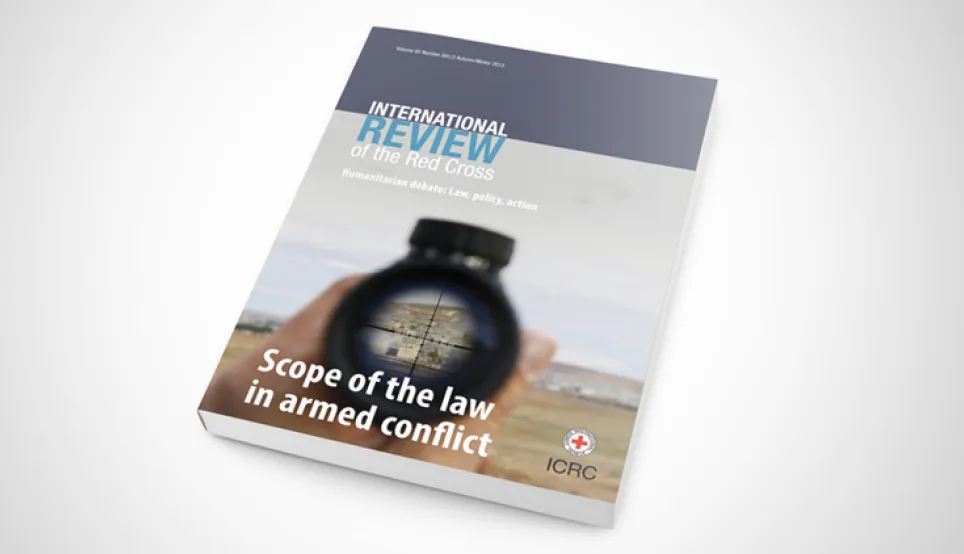On the 19th of February, the ICRC and the Geneva Academy of International Humanitarian Law and Human Rights organized a joint event at the Humanitarium, on the topic: "The scope of the law in armed conflict". The panel discussion launched an upcoming issue of the International Review of the Red Cross that will come out in print in May 2015, (online content available via Cambridge University Press).
The recorded conference is available on Youtube. The panelists' interventions are split in chapters as to ease the user in following the debate according to themes.
- Introduction and welcome remarks - Vincent Bernard (Head of Unit Forum for the Integration and Promotion of the Law at the ICRC), Helen Durham (Director of Law and Policy at the ICRC), Prof. Noam Lubell as moderator (Head, School of Law at the University of Essex and IHL Chair at the Geneva Academy)
- The nature and challenges of classifying armed conflicts - Prof. Marco Sassòli (Professor of International Law and Director of the Department of International Law and International Organizations at the University of Geneva)
- IHL's applicability to extra territorial drone strikes - Ms. Jelena Pejic (Senior Legal Adviser at the ICRC's Legal Division)
- The challenge of determining the end of armed conflict - Prof. Marko Milanovic (Associate Professor at the University of Nottingham School of Law)
Brief summary of the conference
Marco Sassòli began by discussing what triggers an international armed conflict (IAC) or a non-international armed conflict (NIAC). He suggested, in particular, that hostilities by a State exclusively directed against a non-State armed group abroad remain exclusively governed by IHL of NIACs, even if the territorial State does not consent to such hostilities. Regarding the question of importing the rules of IAC into the NIAC regime, Sassòli was of the view that it is not always in the interest of victims to import IAC rules into NIAC, as other bodies of law, such as human rights law, may provide better protection in that situation.
Jelena Pejic focused her remarks on extraterritorial targeting and the geographical scope of application of IHL. She noted that the relevant IHL treaties do not give explicit indication as to their territorial reach. In IAC, there is no controversy that IHL applies to the entire territory of the parties to such a conflict and that, in principle, the parties must refrain from action in neutral territory. In NIAC, especially extra-territorial NIACs, the geographical scope of IHL applicability is controversial. At the core of the debate is the question: can it be said that IHL's application will automatically follow a member of an armed group or a civilian directly participating in hostilities, across any and all borders, thus creating a "global battlefield"? This debate, has, among other things, real consequences for the civilian population of non-belligerent States, who could be victims (by way of "collateral damage") of an attack taking place far from a "hot" battlefield.
In Pejic's opinion, IHL applicability does not automatically extend to a non-belligerent State, and the use of force against individuals in its territory should be governed by the relevant rules of human rights law. In Noam Lubell's view, on the contrary, IHL is designed to apply to all acts of hostilities linked to an armed conflict. IHL does not define the geography of the battlefield, but is meant to apply to the acts of hostilities wherever they take place (even far away from the centre of the "hot" battlefield, including on third States' territories). The criterion for IHL's applicability would be the notion of "nexus" to the NIAC in question. Other bodies of law, such as jus ad bellum and human rights law, may apply concurrently and their interplay could ultimately impose important limitations on the extra-territorial use of force.
Marko Milanovic focused on the end of application of IHL, which implies to look at whether the parties have objectively stopped fighting. He noted that the threshold for the beginning of NIAC is different from that in IAC, since a level of intensity of the hostilities and of organization of the armed group(s) is required. Regarding the end of NIAC, Milanovic defended the view that, rather than waiting for all fighting to be over, one can continuously look if the intensity and organization criteria are no longer satisfied. Ideally, this should happen with a certain degree of permanence and stability so as to avoid the "revolving door" problem of classifying and de-classifying a NIAC.

